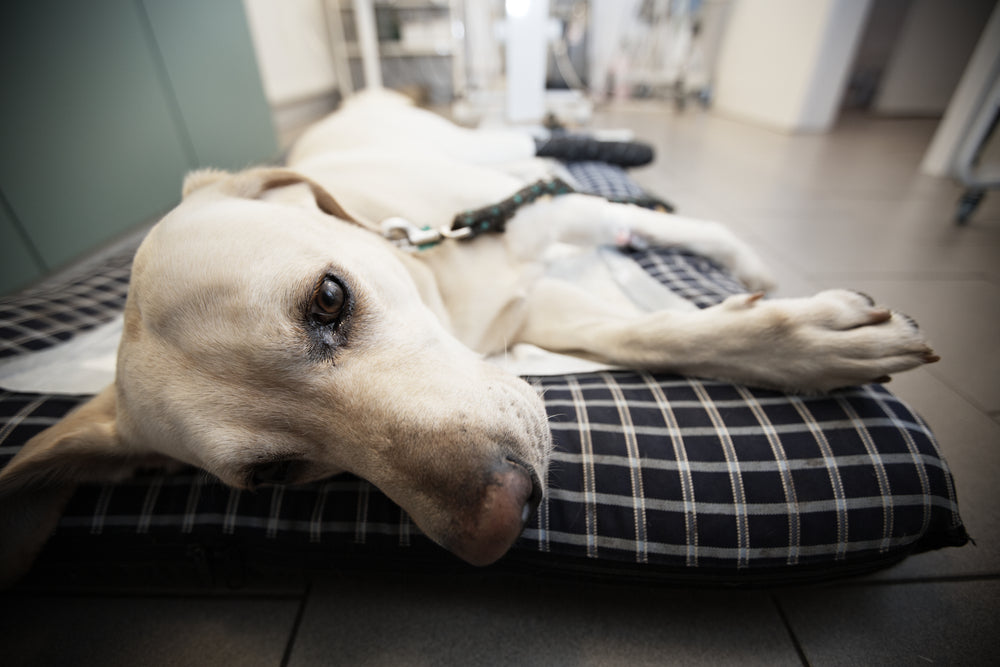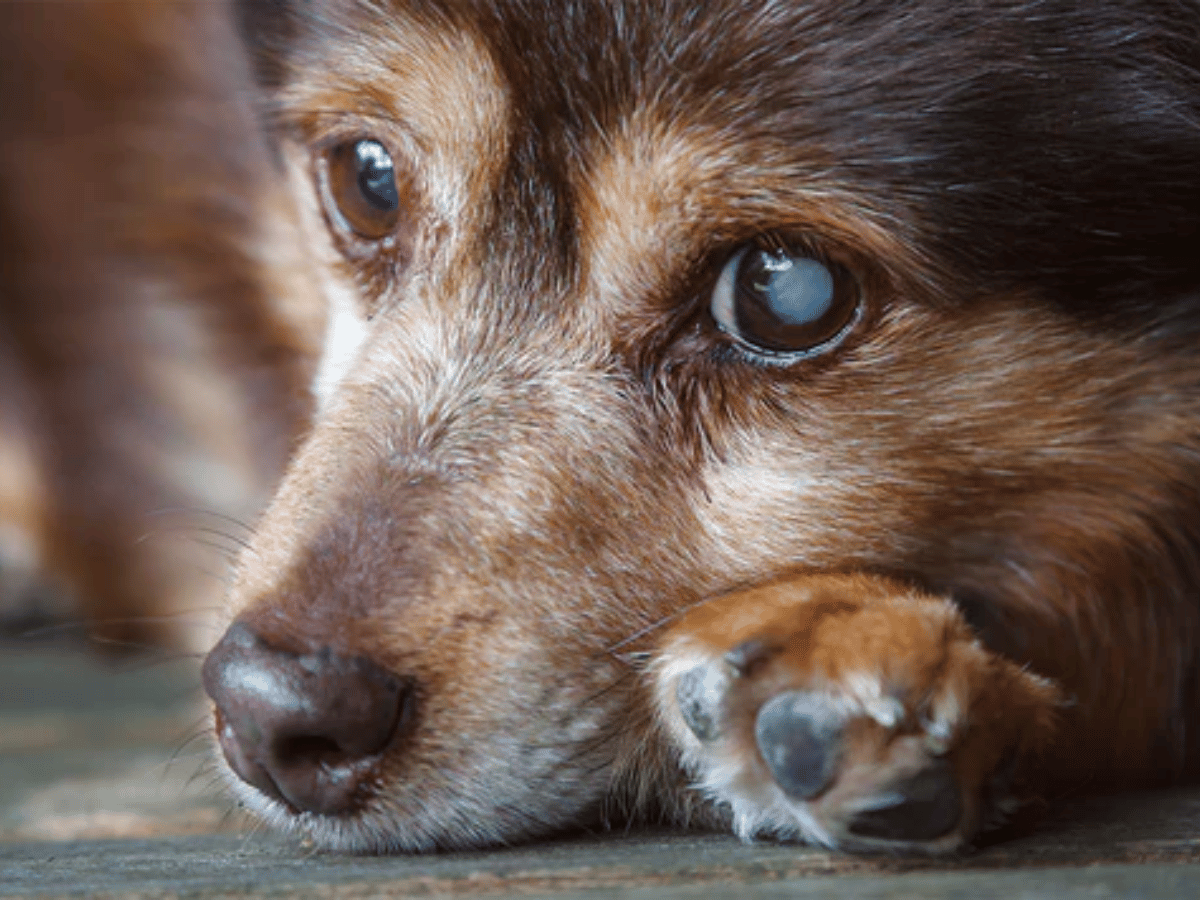
Aggression, separation anxiety, incessant barking: How trainers manage the most difficult dog behaviors
Our dogs can fill our hearts and enrich our lives. But if they develop unwanted behavioral issues, they can become a nuisance, or worse, a danger to themselves or others.
Although difficult canine behaviors such as aggression, separation anxiety, and incessant barking are common, it is important for dog owners to take them seriously when training their puppies to become well-behaved family members.
It may seem cruel to give our faithful companions a lot of rules to follow, but in reality, structures help dogs thrive.
Also keep in mind that when a dog develops difficult-to-manage behaviors or annoying habits, these are often caused by fear and anxiety.
Training your dog helps them manage stress, and if everyone gets along well at home, both humans and pets will be happier. And remember: training can be fun!
Since dogs can't talk, it can be difficult to understand what's going on in their minds. That's where a professional comes in. We asked 169 dog trainers from around the world for their top tips for handling some of dogs' most challenging behaviors, and below are the tips they shared with us:
If you're wondering how to work with an aggressive dog, one that suffers from separation anxiety, or one that tends to bark incessantly, read on.
Aggression in dogs
Why do dogs act aggressively?
As with most behaviors, the first step in managing dog aggression begins with understanding what is causing the behavior.
“Fear is the most common source of aggression,” says Jody Karow of Go Anywhere Dog . “It’s easy to instill fear in dogs, but it can be difficult to help them overcome it.”
In conclusion, she says, "When we focus on helping our dogs overcome their fears, aggressive displays are much less likely to occur."
Dog aggression caused by fear is usually defensive, meaning it is a reaction to incitement or provocation.
It can be caused by negative past experiences (perhaps with a person or another dog or animal) or by a lack of socialization. This is because dogs that are not properly socialized are not used to being around different types of people (such as young children), other dogs, etc., and they are afraid of the unknown.
Now, if you're wondering how to socialize an aggressive dog, the best answer is to do it with a professional. If you try to bring an aggressive dog closer to other people or animals without proper preparation, it can easily turn into a disaster.
Dogs can be aggressive even when they are not afraid. This can be an acquired or learned behavior, for example, in the case of a stray dog that acts aggressively to ensure its survival.
Aggressive Dog Breeds and Genetics
Some people believe that there are aggressive dog breeds in which this nasty behavior is natural. The truth is, depending on the circumstances, any animal can become aggressive.
That said, some dog breeds have genetic characteristics that make them more likely to become aggressive, especially when they are in the care of owners who don't know how to handle them. These dogs need more structure and boundaries than others, or they'll think they're an "alpha" dog.
“Sometimes genetics play a role in a dog’s behavior, just like it does with people,” says Melissa Vardy of Dog Training Now . “Most behaviors can be corrected or, at a minimum, managed with professional help, but people often want their dogs to be something they’re not. We’re frequently asked if we can help a dog adapt to dog parks or daycare… Not every dog is a good fit for every environment, and that’s okay!”
Remember that small dogs can be just as aggressive as large dogs. The main difference is that large breed dogs are stronger, harder to control, and can potentially cause more damage, so they're more likely to get a bad reputation.
Before adopting a dog, even a mutt, it's important to do a lot of research on its breed to see what traits will best suit your lifestyle. Some puppies tend to be gentle, energetic, slouch, etc., and if their personality matches yours, you're less likely to have to deal with behavioral problems.
Aggressive canine behaviors
Aggression can manifest itself in different ways.
There are many clues given by dog body language, and when you see a dog showing its teeth, growling, displaying a "whale eye" or with bristling fur , it can indicate that it is not in a friendly mood and should not be approached.
Some dogs are particularly aggressive when on a leash. This is because they feel vulnerable; because they are tied up, they may not be able to run or fight to the best of their ability.
Resource guarding in dogs can become apparent when a dog begins to protect a resource they consider to be of high value, such as a toy, a treat, a bone, their food bowl, or even a human. This can lead to dangerous altercations, especially if there are children in the home.
If you're wondering how to train a dog not to bite, resource guarding may be one of the biggest issues to deal with.
How to train an aggressive dog
Regardless of what triggers aggressive behavior, it must be addressed. Otherwise, someone will end up getting hurt. As mentioned, learning how to stop a dog from biting is more complicated because it's a symptom with a deeper cause.
But according to Sonya Wilson of Southpaws Playschool , it's difficult to find the source of the behavior and then develop a plan to change it.
She warns: "Fear-based behaviors can get worse if the wrong techniques are used or misinterpreted." "It's so important to know what's actually affecting the dog before trying to change their behavior. It's like a doctor's diagnosis—in fact, a wrong diagnosis can be harmful."
David Levin of Citizen Hound agrees. “It’s highly unlikely that dog-to-dog or dog-to-human aggression will change without a lot of changes in your life,” he adds. “The skills needed to combat it are actually too advanced for most handlers. Furthermore, they often don’t have access to the kinds of environments or training contexts needed to be effective.”
Socializing a dog to prevent aggression
Educators say socialization is key, but if you're wondering how to socialize an aggressive dog, the answer lies with the help of a dog training professional. Unfortunately, you shouldn't attempt this yourself, again because a person or pet could be seriously injured.
The good news is that you can prevent aggression problems by socializing your dog at a young age, if you get him when he's a puppy. Make sure he meets lots of different people and animals and has positive experiences (if he's traumatized, this could lead to unwanted behaviors later on).
Ask friends to come over to play with him and give him treats. Invite their well-behaved companions over too; then your dog will learn that making new friends is really fun!
“I think socialization is one of the most important behaviors to work on,” says Alan Baldwin of Legacy Dog Training LLC . “A dog that isn’t socialized properly can exhibit a variety of problems, including aggression.”
He continues: "When a dog is not properly socialized with people, [it] may become wary of strangers. A dog that has not been properly socialized with other dogs may exhibit frustration-induced aggression, where it snaps, barks, and growls in response to a fence, while pacing back and forth."
He explains another potential problem: "Leash aggression can be caused by a lack of socialization. Lack of socialization can also lead to a lack of confidence or a bad attitude when the dog is placed in a group of unfamiliar dogs."
Separation anxiety
Separation anxiety in dogs is a common problem, which doesn't mean it's easy to solve. Not only is it frustrating to know your puppy is stressed while you're away, but they can also become destructive, chewing things like furniture or shoes, urinating on the carpet, or sneaking into the trash.
This is another case where it can be difficult to identify the underlying cause and misinterpretation can easily make things worse.
“For owners, separation anxiety can be one of the most difficult problems to solve,” admits Sue Brown of The Light of Dog . “It’s often difficult for them to find a starting point because the behavior occurs when the owner is away. A professional experienced in this area can be invaluable.”
April Lott of Wigglebums Training adds: "Many owners don't understand that this problem requires that a dog not be left alone until they are able to develop the coping skills necessary to be alone without stress."
It is always best to consult a professional if your dog's anxiety is intense or if he could hurt himself (for example, if he tends to chew or put himself in danger, he could ingest something dangerous).
But in mild cases, you can try some simple tips, which might solve dog anxiety :
- While you're away, leave some relaxing music, a podcast, or even an audiobook.
- Don't make a big deal out of your departure (don't coddle, don't say goodbye, etc.).
- Take your dog for a walk or play before you leave to reduce excess energy.
- “Train” by leaving your dog home alone for short periods of time, then gradually increasing the length of time you are away.
- Consider hiring a dog walker to break up long, lonely days or take him to daycare if he enjoys playing with other puppies.
- Give your dog a high-value reward when you leave, such as a special treat; however, be careful that it is not something that could pose a choking hazard, such as a rawhide bone.
Incessant barking
When you have a dog, some barking is to be expected, but if it becomes incessant, it can go from adorable to annoying.
By now, you should no longer be surprised to be informed that the first step in learning how to stop a dog from barking is to understand why he does it.
These reasons may include:
- Boredom
- Attention seeking
- The confusion
- Fear
- The demand (they want something)
Again, if you want to get a dog to stop barking, misinterpreting the reason for the behavior can make things worse.
Angel Wasserman of Paws in Training shares a perfect example. “I once received a call from a potential new client,” she recalls. Her friend (an existing client) had given her the training protocol I recommended to solve his own dog’s barking problem.
She continues, “The protocol hadn’t worked for her dog, and she wanted to know why! The “why” was that her dog was barking for a different reason than the other client’s dog. When we addressed the root cause of why the new client’s dog was barking, we were able to apply the protocol that worked for her problem.”
So, if you want to know how to train a dog not to bark, you need to have it individually assessed by a professional.
We consider our pets part of the family, and raising them to be well-behaved members of the household can mean living in harmony instead of chaos. When your pooch knows how to behave properly and understands what's expected of him, you can coexist peacefully—and, believe it or not, he'll be much happier too!
When it comes to properly training your pet, especially when it comes to difficult canine behaviors, the key is to hire a professional trainer. They can help you identify the problem, communicate with your companion, and modify their behavior so you can build a stronger bond than ever before.
Would you like advice on whether it
Did you find these tips on managing difficult dog behavior helpful? You'll love our next article, which explains how to choose the right dog trainer for you !
Join us on Facebook , where we frequently post tips for keeping your pet healthy, saving on vet bills, and more. Also, be sure to sign up for our newsletter and our latest articles and blog posts (packed with valuable information) will arrive directly in your inbox!




















Leave a comment
This site is protected by hCaptcha and the hCaptcha Privacy Policy and Terms of Service apply.